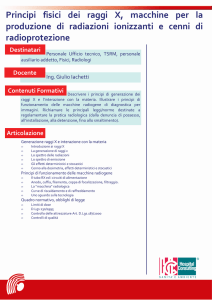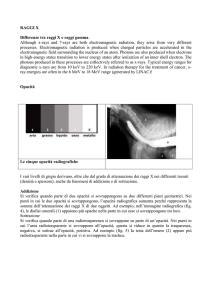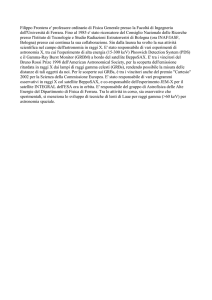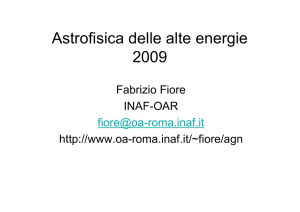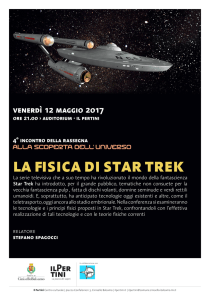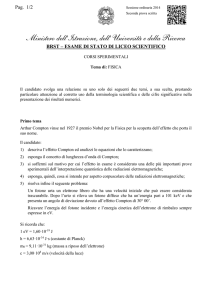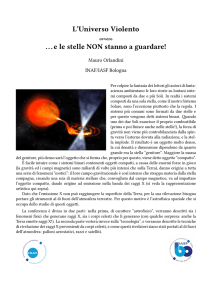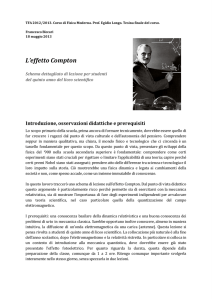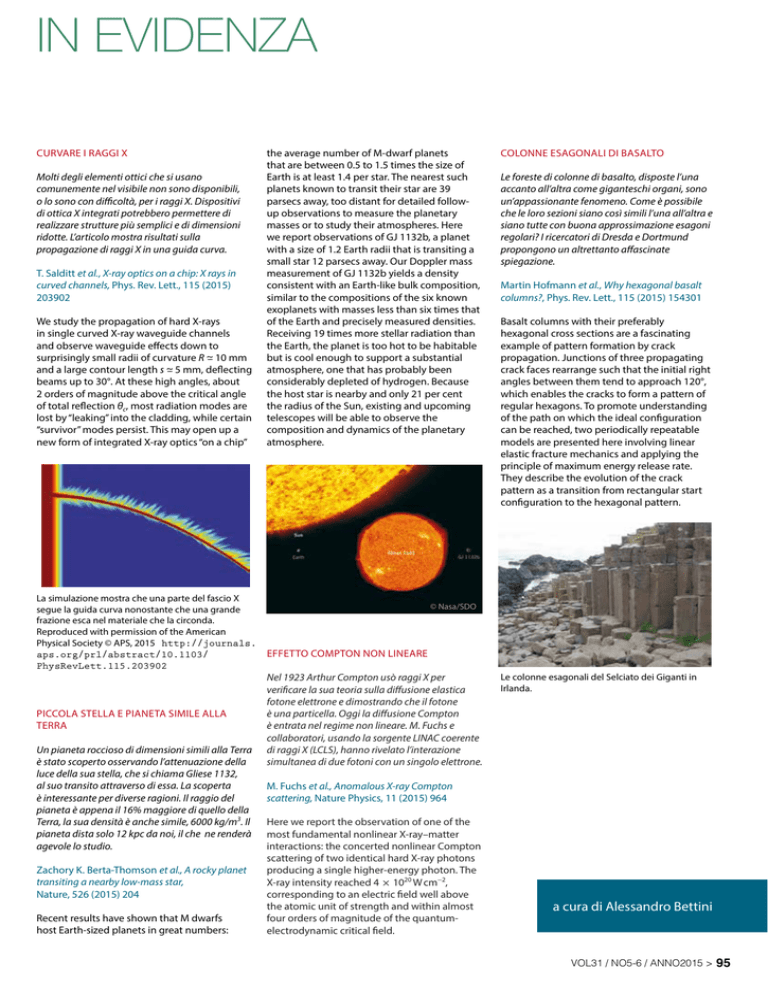
in evidenza
Curvare i raggi X
Molti degli elementi ottici che si usano
comunemente nel visibile non sono disponibili,
o lo sono con difficoltà, per i raggi X. Dispositivi
di ottica X integrati potrebbero permettere di
realizzare strutture più semplici e di dimensioni
ridotte. L’articolo mostra risultati sulla
propagazione di raggi X in una guida curva.
T. Salditt et al., X-ray optics on a chip: X rays in
curved channels, Phys. Rev. Lett., 115 (2015)
203902
We study the propagation of hard X-rays
in single curved X-ray waveguide channels
and observe waveguide effects down to
surprisingly small radii of curvature R ~
– 10 mm
and a large contour length s ~
– 5 mm, deflecting
beams up to 30°. At these high angles, about
2 orders of magnitude above the critical angle
of total reflection θc, most radiation modes are
lost by “leaking” into the cladding, while certain
“survivor” modes persist. This may open up a
new form of integrated X-ray optics “on a chip”
La simulazione mostra che una parte del fascio X
segue la guida curva nonostante che una grande
frazione esca nel materiale che la circonda.
Reproduced with permission of the American
Physical Society © APS, 2015 http://journals.
aps.org/prl/abstract/10.1103/
PhysRevLett.115.203902
Piccola stella e pianeta simile alla
Terra
Un pianeta roccioso di dimensioni simili alla terra
è stato scoperto osservando l’attenuazione della
luce della sua stella, che si chiama Gliese 1132,
al suo transito attraverso di essa. La scoperta
è interessante per diverse ragioni. Il raggio del
pianeta è appena il 16% maggiore di quello della
terra, la sua densità è anche simile, 6000 kg/m3. Il
pianeta dista solo 12 kpc da noi, il che ne renderà
agevole lo studio.
Zachory K. Berta-Thomson et al., A rocky planet
transiting a nearby low-mass star,
Nature, 526 (2015) 204
Recent results have shown that M dwarfs
host Earth-sized planets in great numbers:
the average number of M-dwarf planets
that are between 0.5 to 1.5 times the size of
Earth is at least 1.4 per star. The nearest such
planets known to transit their star are 39
parsecs away, too distant for detailed followup observations to measure the planetary
masses or to study their atmospheres. Here
we report observations of GJ 1132b, a planet
with a size of 1.2 Earth radii that is transiting a
small star 12 parsecs away. Our Doppler mass
measurement of GJ 1132b yields a density
consistent with an Earth-like bulk composition,
similar to the compositions of the six known
exoplanets with masses less than six times that
of the Earth and precisely measured densities.
Receiving 19 times more stellar radiation than
the Earth, the planet is too hot to be habitable
but is cool enough to support a substantial
atmosphere, one that has probably been
considerably depleted of hydrogen. Because
the host star is nearby and only 21 per cent
the radius of the Sun, existing and upcoming
telescopes will be able to observe the
composition and dynamics of the planetary
atmosphere.
Colonne esagonali di basalto
Le foreste di colonne di basalto, disposte l’una
accanto all’altra come giganteschi organi, sono
un’appassionante fenomeno. Come è possibile
che le loro sezioni siano così simili l’una all’altra e
siano tutte con buona approssimazione esagoni
regolari? I ricercatori di Dresda e Dortmund
propongono un altrettanto affascinate
spiegazione.
Martin Hofmann et al., Why hexagonal basalt
columns?, Phys. Rev. Lett., 115 (2015) 154301
Basalt columns with their preferably
hexagonal cross sections are a fascinating
example of pattern formation by crack
propagation. Junctions of three propagating
crack faces rearrange such that the initial right
angles between them tend to approach 120°,
which enables the cracks to form a pattern of
regular hexagons. To promote understanding
of the path on which the ideal configuration
can be reached, two periodically repeatable
models are presented here involving linear
elastic fracture mechanics and applying the
principle of maximum energy release rate.
They describe the evolution of the crack
pattern as a transition from rectangular start
configuration to the hexagonal pattern.
© Nasa/SDO
Effetto Compton non lineare
Nel 1923 Arthur Compton usò raggi X per
verificare la sua teoria sulla diffusione elastica
fotone elettrone e dimostrando che il fotone
è una particella. Oggi la diffusione Compton
è entrata nel regime non lineare. M. Fuchs e
collaboratori, usando la sorgente LINAC coerente
di raggi X (LCLS), hanno rivelato l’interazione
simultanea di due fotoni con un singolo elettrone.
Le colonne esagonali del Selciato dei Giganti in
Irlanda.
M. Fuchs et al., Anomalous X-ray Compton
scattering, Nature Physics, 11 (2015) 964
Here we report the observation of one of the
most fundamental nonlinear X-ray–matter
interactions: the concerted nonlinear Compton
scattering of two identical hard X-ray photons
producing a single higher-energy photon. The
X-ray intensity reached 4 × 1020 W cm−2,
corresponding to an electric field well above
the atomic unit of strength and within almost
four orders of magnitude of the quantumelectrodynamic critical field.
a cura di Alessandro Bettini
vol31 / no5-6 / anno2015 >
95

